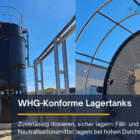Degradation rate
The degradation rate describes the rate at which organic or inorganic substances in water or wastewater are degraded by physical, chemical or biological processes. In industrial water and wastewater treatment, the degradation rate is an important parameter for evaluating the efficiency of purification processes, particularly with regard to the








